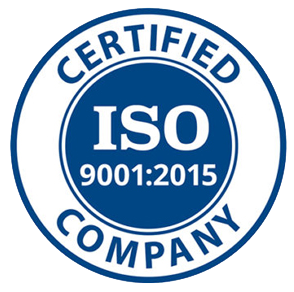Blog
green infrastructure how we incorporate sustainability into our projects

In an era of increasing environmental awareness, incorporating sustainability principles into construction and infrastructure projects has become a moral imperative to a strategic necessity. Green infrastructure represents an innovative approach to planning, building, and operating projects, focusing on reducing environmental impact, improving quality of life, and promoting sustainable solutions. This article will review the ways in which companies like Mano Group are incorporating green infrastructure principles into their projects, emphasizing the environmental, economic, and social benefits that result.
Ecological Planning and Natural Resource Conservation
The green infrastructure approach is based on rigorous ecological planning, which takes into account the natural characteristics of the area and the need to conserve precious resources.
Impact: Early planning that incorporates environmental considerations can minimize damage to existing ecosystems, preserve green spaces, and maintain biodiversity. Intelligent use of natural resources, such as water and land, already at the planning stage, contributes to efficiency and savings throughout the life of the project.
Implementation at Mano Group: In the planning processes of our projects, we conduct a comprehensive review of the natural environment, identify ecologically sensitive areas and plan the project in a way that will blend in harmoniously with the existing environment, while preserving green areas and incorporating natural elements in the landscape design.
Use of sustainable and environmentally friendly materials
Intelligent selection of building materials is a key component of green infrastructure. Preference is given to materials with a low carbon footprint, recycled or recyclable materials, and materials produced from sustainable sources.
Impact: Using green materials reduces the environmental impact of the construction process, saves energy and resources, and promotes a more sustainable industry. High-quality, low-maintenance materials also contribute to long-term savings.
Implementation at Mano Group: We are careful to choose building materials with a green standard, encourage the use of recycled materials and ensure the use of wood from sustainably managed sources. We are constantly examining innovative and environmentally friendly materials to incorporate them into our projects.
Energy efficiency and use of renewable energy
Green infrastructure places significant emphasis on reducing energy consumption and using renewable energy sources. Energy-efficient building design, use of natural and economical lighting, and integration of solar energy systems or other green systems are an integral part of the approach.
Impact: Reducing energy consumption leads to savings in the project’s operating costs and reduced greenhouse gas emissions. Using renewable energy contributes to energy independence and a cleaner environment.
Implementation at Mano Group: We incorporate principles of passive design and the use of energy-efficient technologies in the buildings we design and build. We encourage the installation of solar systems on building roofs and the integration of smart and cost-effective lighting solutions.
Sustainable Water Management
Water resource management is another critical aspect of green infrastructure. This includes reducing water consumption, reusing gray water, and collecting and utilizing rainwater.
Impact: Efficient water management helps save a valuable resource, reduces the burden on municipal water supply and sewage systems, and promotes sustainable water use.
Implementation at Mano Group: We design rainwater collection systems for use in irrigation and other non-domestic needs, encourage the use of water-efficient plumbing fixtures, and explore options for gray water reuse in certain projects.
Integrating Green Spaces and Natural Infrastructure
Green infrastructure does not only focus on buildings, but also on the integration of green spaces and natural infrastructure within and around projects. This includes creating parks, community gardens, green roofs and preserving open spaces.
Impact: Green spaces improve air quality, provide natural shade and cooling, increase biodiversity and enhance the well-being of residents and project users. Natural infrastructure, such as bio-swales, can help manage runoff naturally.
Implementation at Mano Group: We incorporate extensive green spaces into our project designs, create inviting public spaces and encourage the use of green roofs on buildings. We aim to preserve and restore local ecosystems in the vicinity of our projects.
Sustainable Waste Management
During the construction process and throughout the life of the project, sustainable waste management is essential. This includes reducing the amount of waste generated, recycling and reusing materials, and responsibly disposing of non-recyclable waste.
Impact: Effective waste management reduces landfill pressure, saves resources and reduces the environmental impact of the project.
Implementation at Mano Group: We implement waste management programs on the construction site, which encourage the sorting and recycling of construction waste. We work with subcontractors who are committed to sustainable waste management practices.
Integrating green infrastructure into our projects is not only environmentally responsible, but also a smart business decision. Sustainable projects offer many benefits, including saving operating costs, improving the company’s image, meeting increasing green standards and attracting environmentally conscious clients and investors. At Mano Group, we are committed to integrating sustainability principles into all phases of the project, believing that responsible development is the way to build a better future for all of us.


